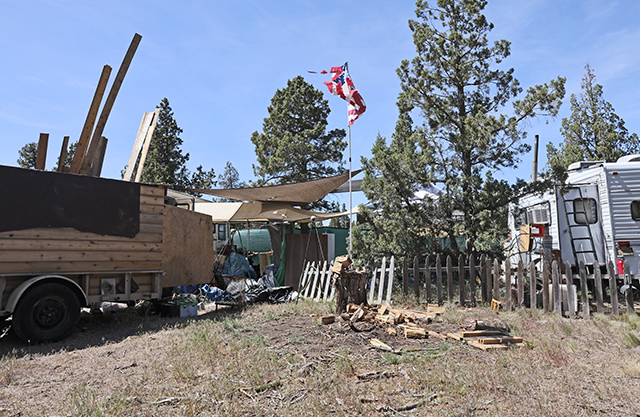Column: Force-Feeding: Cruel at Guantánamo, but OK for our parents
Published 12:00 am Sunday, November 29, 2015
The practice of forced feeding has been highlighted by its use on hunger strikers in Guantanamo Bay and, more recently, in Israel, where a vigorous debate about the ethics of such a practice is taking place. But you don’t have to be in prison to have a feeding tube jammed up your nose. Millions of elderly Americans are fed through tubes despite a lack of substantial evidence pointing to any clinical benefit.
Tube feeding was developed to provide nutrition for patients — increasingly patients with dementia — who are unable to eat on their own. Most of them, especially as they approach the terminal end of the disease, develop difficulties in swallowing and frequently aspirate food or other stomach contents into their lungs, developing pneumonia.
Study after study, however, has shown that tube feeding doesn’t provide any benefit compared with feeding these patients by hand, which is more labor-intensive but much better for the patients. It doesn’t improve survival, reduce infections, reduce the incidence of aspiration pneumonia or improve patients’ nutritional status over those who are hand fed or even over patients not fed at all.
If anything, feeding tubes can be harmful. One study showed that patients with feeding tubes had a higher incidence of pressure ulcers in their backs from being immobilized and lying in bed. Feeding tubes also have frequent complications of their own like being dislodged or being clogged. (Feeding tubes are a necessary evil in some cases, such as after surgery or after a serious accident.)
Much of the pressure to place feeding tubes comes from the patients’ families, but physicians are equally to blame. Doctors are known to be an overly optimistic bunch, and a survey revealed that almost two-thirds of them erroneously believed feeding tubes would improve survival in their patients. In fact, given that tube feeding has now been shown to be harmful in patients with dementia, it should not even be offered to this population.
The overuse of feeding tubes is also an example of how financial incentives drive some deplorable practices in medicine. Research by Susan Mitchell, a professor of geriatrics at Harvard Medical School, has shown that patients in for-profit nursing homes are much more likely to have feeding tubes. Nursing homes charge higher rates for patients with feeding tubes, and they require much less involvement of nursing staff compared with careful hand feeding, a practice recommended for patients with dementia.
Like any other problem in medicine, cutting this epidemic to size will require cooperation from all the interested parties. Financial incentives that may be driving overuse need to be discarded. Patients who are expected to live at least a few days should be fed by hand, but families must accept that in some cases, the inability to eat is itself often a sign that the disease has progressed to its final stage. For those patients who can’t be hand fed and who don’t want to be fed, inserting a tube only compounds their agony.
Not long ago, I walked to the bedside of a glassy-eyed patient looking at the ceiling. Suffering from dementia, he had a tube in his chest, draining excess fluid that had collected in his lungs because of pneumonia, and now the family had requested a feeding tube.
My intern lathered the tube with lubricant, and started to swivel it up his nose. The man, who had endured much without uttering even a whimper, started to shake, and went on to say the first pair of words he had spoken in months: “Kill me.” What started as a faint, shivering whisper, was repeated until he was screaming “killmekillmekillmekillme!” as loudly as his lungs would allow.
— Haider Javed Warraich, a fellow in cardiovascular medicine at Duke University Medical Center, is writing a book about modern death.






